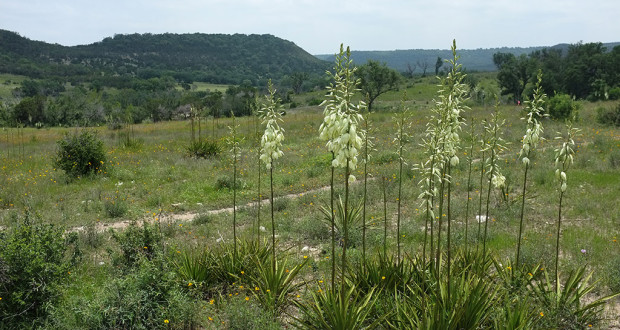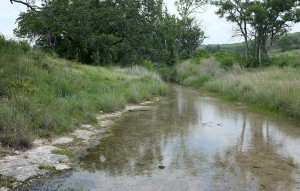In spring, the prairies on the refuge burst into colorful palettes for Hill Country wildflowers and butterflies that flock to them.
These three faces of the refuge are reflected in its three main public tracts – Doeskin Ranch, Warbler Vista and Shin Oak.
- Doeskin Ranch. Here, five miles of trails travel prairie woodlands strewn with wildflowers, a shady oak forest along a creek and panoramic Hill Country scenery. On a hot day, the half-mile Creek Trail offers what little shade there is on the ranch. The more strenuous Rim Rock Trail crosses 2.2 miles of prairie and hills to a plateau that overlooks the countryside. The Pond and Prairie Trail loops for a half-mile through grassy fields and a small grove of trees.
- Warbler Vista. About 2.5 miles of short, flat trails weave between the juniper and oaks at Warbler Vista in prime habitat for the Golden-cheeked Warbler. The Sunset Deck at the end of the public road offers a spectacular view of Lake Travis and the surrounding valley.
- Shin Oak Observation Deck. Located in prime Black-capped Vireo habitat, the deck is closed in part of March and April when the highly endangered bird begins to arrive and establish its breeding territory. Thereafter, you’ll hear their songs, even if you are not fortunate enough to see them.
The tracts are separated by several miles, with the refuge headquarters in between. The short Post Oak Creek Trail runs along the creek behind the headquarters, where you can spot migratory birds or waterfowl feeding near the blind at the trial head.
And, as the refuge guide describes, there is more to the refuge than meets the eye:
Beneath the homes of songbirds lies a mysterious world of caves, rivers and sinkholes called “karst”. Over time, naturally acidic water dissolved the limestone and sculpted a labyrinth inhabited by night creatures. Ringtail cats and raccoons retreat into cave entrances for shelter. Cliff chirping frogs and whitethroat slimy salamanders squeeze into moist crevices. Cave crickets and daddy longlegs live within caves, but leave to feed and return. Some spiders, beetles and pseudoscorpions never come out to the light, living all their lives in reclusive darkness. Still deeper lies the Edwards Aquifer, the source of many Central Texas springs and beautiful Hill County rivers. These same rivers eventually flow into the marshes, estuaries and bays along the Texas coast.
REFUGE GALLERY







